Sustainable Jewelry Guide: Ethical Choices

Table of Contents
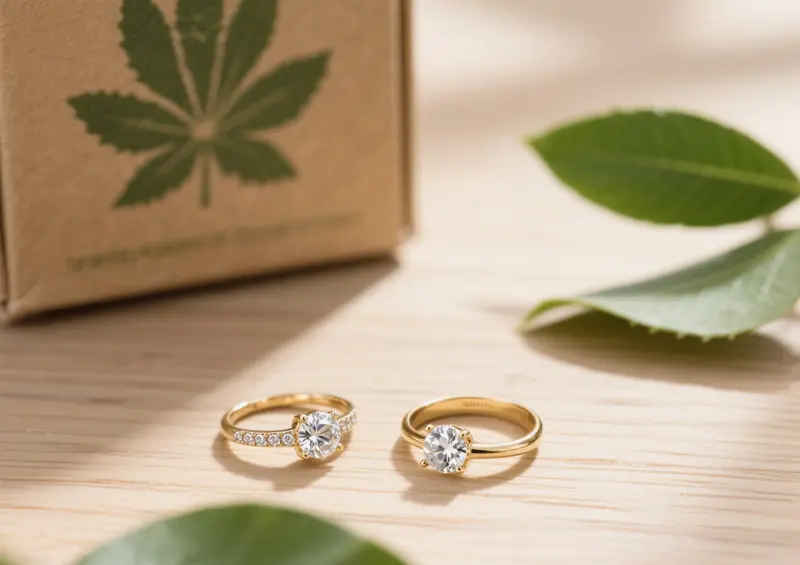
Key Takeaways
- By opting for sustainable jewelry, you’re minimizing the mining industry’s environmental devastation and exploitative labor conditions. With your purchase, you can help move the needle towards more conscientious industry practices.
- You can support this sustainability by choosing recycled gold and silver jewelry. This reduces the demand for new mining and resource use.
- Focus on traceable and ethically sourced gemstones that are conflict-free and mined with fair labor practices. Request jewelers for details on a gem’s provenance prior to purchase.
- Think lab-grown diamonds as a gorgeous, sustainable twist on mined stones. They provide an equivalent level of quality, but bypass the ecological and fair labor concerns of mining.
- Support brands that share their supply chain and production practices. Seek out certifications and compelling brand narratives that validate their dedication to ethics.
- Embody circularity by fixing, refashioning, or recovering your old baubles. It stretches the life of precious materials and decreases waste.
Sustainable jewelry is crafted from ethically-sourced, recycled, or eco-friendly components and processes. This choice minimizes harmful effects on both people and the planet. It considers the entire supply chain, from mining materials to labor practices in crafting each piece. Opting for sustainable jewelry brands reflects a commitment to transparency. In this guide, we’ll explore how to identify these sustainable jewelry pieces and understand why they are smarter options for your collection.
The Hidden Cost of Glamour
The allure of fine jewelry can mask an unseemly truth. The jewelry industry’s emphasis on glamour often conceals the ecological and human costs of resource extraction. Conventional gold mining generates substantial ecological harm. To obtain just a few grams of gold, miners must shift multiple metric tons of soil, often using cyanide and mercury, which contaminate local water systems for years.
The carbon emissions from such operations contribute to environmental issues. Fast fashion exacerbates this, driving demand for inexpensive, fleeting pieces that ultimately contribute to landfill overflow. Sustainable jewelry companies are emerging to combat these issues by offering ethical options that prioritize responsible sourcing and eco-friendly materials, such as recycled silver.
The human cost of the jewelry industry is equally steep. Due to the intricate supply chain, consumers often cannot be sure of their purchase’s ethical nature. Many miners work in dangerous conditions for low wages within oppressive hours.
Blood or conflict diamonds are gems mined in war zones, financing violence and abuse, showcasing the connection between the jewelry trade and human rights violations. Authentic sustainability in jewelry transcends eco-friendly materials; it encompasses fair labor and social responsibility throughout the supply chain, principles upheld by many ethical jewelry brands.
As awareness of these hidden costs grows, consumers are demanding greater transparency from jewelry brands. There’s a craving for full disclosure about the journey of each piece, from mine to market.
This shift in consciousness is transforming the industry. For example, using recycled gold can diminish carbon emissions by as much as 99% compared to newly mined gold.
This increasing demand for transparency and ethical practices is guiding the industry toward a sustainable future, encouraging both buyers and designers to prioritize ethical collections over traditional options.
Choosing sustainable jewelry not only enhances your style but also supports ethical practices that protect our planet and communities.
Why Choose Sustainable Jewelry?
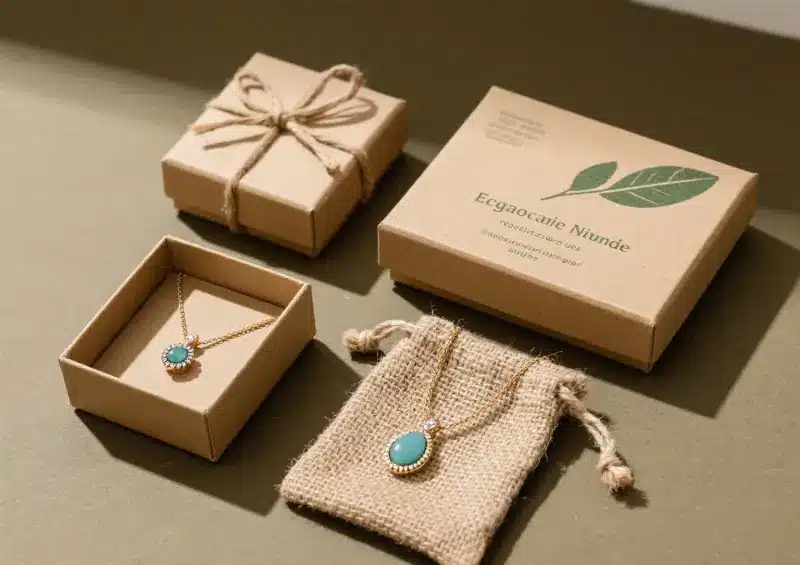
When you choose ethical jewelry, you’re doing more than just making a pretty choice. It means considering the environmental, social, and personal effects of each jewelry piece — from raw material sourcing, such as recycled silver, to final craftsmanship. It’s a win for a more conscientious jewelry industry and a win for you.
Environmental Stewardship
Sustainable jewelry reduces the environmental impact of the traditional jewelry industry. Gold mining is a significant contributor to pollution, with as much as 3,000 tons of new gold mined each year, leading to considerable land degradation. By choosing jewelry crafted from recycled metals, we minimize the need for additional mining activities, which helps preserve resources and safeguard delicate ecosystems. For instance, mining accounted for thousands of square kilometers lost in the Amazon between 2005 and 2015.
Sustainable practices fight pollution head-on. Toxic chemicals such as cyanide used in certain mining practices can contaminate water supplies, affecting flora, fauna, and nearby populations. Ethical jewelry brands that prioritize sustainability tend to implement zero-waste programs and use eco-friendly materials, significantly reducing their environmental footprint and preventing further damage.
Social Responsibility
Ethical sourcing is a hallmark of sustainable jewelry, guaranteeing the individuals behind the goods are respected. That means supporting brands that pay fair wages and safe conditions for miners and jewelers. Most colored stones are mined manually and in certain areas, these mines are associated with abusive and substandard working conditions.
By supporting these brands, you help support these communities. It encourages transparency in the supply chain, ensuring companies are responsible for where they source from. By supporting companies that are investing in communities, you are supporting a cycle where people matter more than margins, where the glamor of the jewelry is not a glamorization of suffering.
Personal Well-being
There’s something so right about adorning yourself in ethical jewelry that resonates with your values. Wearing pieces made from sustainable metals brings great pride, as they don’t hurt the planet or humanity. This bond transforms a beautiful accessory into a passionate declaration of your vision for a more compassionate world. It gives you a voice to show who you are, not just in design, but in what the piece stands for.
Lasting Value
Sustainable jewelry often equates to higher quality and durability.
They’re made with timeless materials such as recycled precious metals and ethically sourced stones.
This dedication to craftsmanship helps assure your jewelry stands the test of time.
With smart investments in timeless designs and taking care, these pieces can become heirloom items that get passed from generation to generation.
Future Generations
What we decide today creates tomorrow’s world. When you choose ethical jewelry, you contribute to minimizing the jewelry industry’s environmental footprint and conserving natural resources for years to come. It advocates for responsible labor, establishing a new norm that protects workers. Manufacturers like HonHo Jewelry Manufacturer, with their focus on sustainable materials and quality control, play a role in this transition. By supporting these sustainable jewelry brands, you’re promoting a more responsible industry and inspiring others to shop mindfully.
Defining Sustainable Jewelry

Sustainable jewelry accounts for the full lifecycle of a piece, from origin to end of life. This method goes further than appearance to encompass environmentalism, ethical labor, and sociological ethics, emphasizing the use of ethical jewelry brands that utilize sustainable metals and recycled silver.
|
Material Type |
Examples |
Key Benefits |
|---|---|---|
|
Recycled Metals |
Gold, Silver, Platinum |
Reduces the need for new mining, which lessens land degradation, water pollution, and energy use. |
|
Diamonds, Sapphires, Emeralds |
Offers a conflict-free and environmentally lower-impact alternative to mined stones. Ensures traceability. |
|
|
Ethically Sourced Gems |
Fair Trade Sapphires, traceable diamonds |
Guarantees that stones are mined without funding conflict and under fair labor conditions. |
|
Wood, recycled glass, tagua nuts |
Provides unique, biodegradable, or upcycled options that move away from traditional extraction. |
Ethical Sourcing
The basis of sustainable jewelry is having traceability of its elements. This involves selecting gems and metals from vendors who promise equitable labor, where employees are paid fairly and have safe conditions.
Since old-school mining can do a lot of damage to land and water supplies, the brands they love join forces with sources that reduce their environmental impact.
This often includes supporting small-scale and artisanal mining communities that are committed to responsible practices. These partnerships help ensure that local communities benefit directly from the resources.
It is a crucial first step to check where all the materials come from to circumvent “conflict minerals.” Certifications such as the Kimberley Process attempt to avoid the conflict diamond trade, so the jewelry is not fueling human rights violations.
Responsible Production
Their ethical jewelry brands focus on responsible production by incorporating efficiency into every step of their jewelry-making process. This begins with waste-minimizing designs that ensure precious resources like recycled silver and gold are used judiciously. Strict water and energy conservation practices in workshops and factories are essential. This commitment extends to the final packaging, where brands utilize earth-conscious and recycled materials to reduce their footprint. Equally important is the human aspect, emphasizing safe, healthy, and supportive working environments for every artisan and employee.
Circular Economy
Jewelry’s circular economy is key to its sustainability, especially for ethical jewelry brands that push you to move beyond a “take-make-dispose” model. These brands advocate for sustainable practices by providing jewelry recycle programs, allowing shoppers to send back old pieces to salvage valuable metals like recycled silver and stones for new creations. This approach dramatically lessens the need for newly mined materials, aligning with the values of responsible jewelry companies.
Designing jewelry for longevity is another pillar — crafting pieces that can be worn and loved for generations, rather than tossed when trends shift. Ethical jewelry designers bolster this further by offering repair and refurbishment services to extend the life of each unique jewelry piece.
Your Guide to Conscious Materials
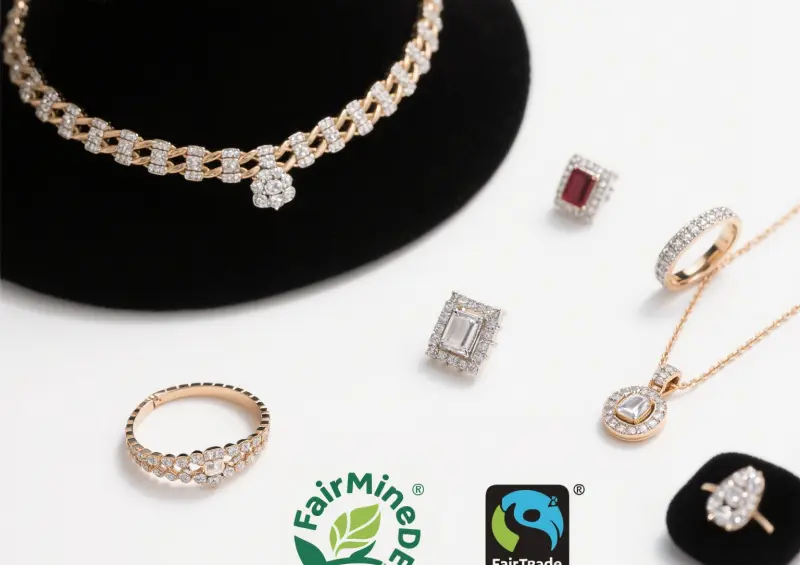
Selecting sustainable jewelry begins with knowing the materials, such as recycled silver and fairmined gold. As consumers seek greater transparency, ethical jewelry brands are moving toward materials with conscious sourcing and a reduced environmental impact, considering not just the design but the source of the metals and stones.
Recycled Metals
Opting for jewelry crafted from recycled metals is among the top measures to minimize your footprint. It immediately reduces the need for new mining, which moves monumental amounts of earth and contaminates habitats. By utilizing 100% recycled gold, for example, the carbon footprint of a piece is greatly reduced.
So a lot of brands are currently revving up their recycled materials. Not just the precious metals, such as gold, silver and platinum, but base metals. For example, manufacturers like HonHo Jewelry Manufacturer specialize in creating high-quality pieces from materials like stainless steel, 925 sterling silver, and upcycled brass, focusing on durability and eco-friendly production that meets international standards. With this, it fosters a circular economy where materials of the past are reborn.
Traceable Gemstones
What’s crucial to understand is where your gems originate. All that said, some gems, such as rubies from particular regions, have been tied to horrific ethical dilemmas, such as conflict and abusive labor.
Asking where a stone comes from is a good way to make sure that it’s conflict-free and ethically mined.
Seek jewelers that offer transparency or trust established gem sources that can trace a stone to its origin, ensuring miners are paid fairly and work in safe environments.
Lab-Grown Diamonds
Lab-grown diamonds provide a fascinating alternative to mined diamonds, delivering the exact same physical, chemical and optical characteristics – minus the environmental and ethical issues of mining.
Mining the diamond is resource-intensive, with 148 million carats mined every year, leaving behind considerable land devastation. Lab-grown diamonds sidestep this altogether as they’re grown in contained environments utilizing a fraction of the resources.
This renders them more sustainable. They’re generally less expensive and come in just about every style of jewelry imaginable, from traditional solitaires to contemporary pieces. When buying, seek out certifications from organizations such as the IGI (International Gemological Institute) that attest to the diamond’s quality and lab-grown provenance.
Alternative Materials
Beyond classic metals and stones, there’s a lot of other great materials to choose from.
Cultured freshwater pearls, for instance, are nurtured in water farms, thus a replenishable material.
Recycled synthetics, like plastics or resins, can be transformed into clever and contemporary jewelry.
By backing brands that experiment with these cutting edge materials, we’re promoting a more varied and sustainable industry.
Beyond the Label: True Transparency
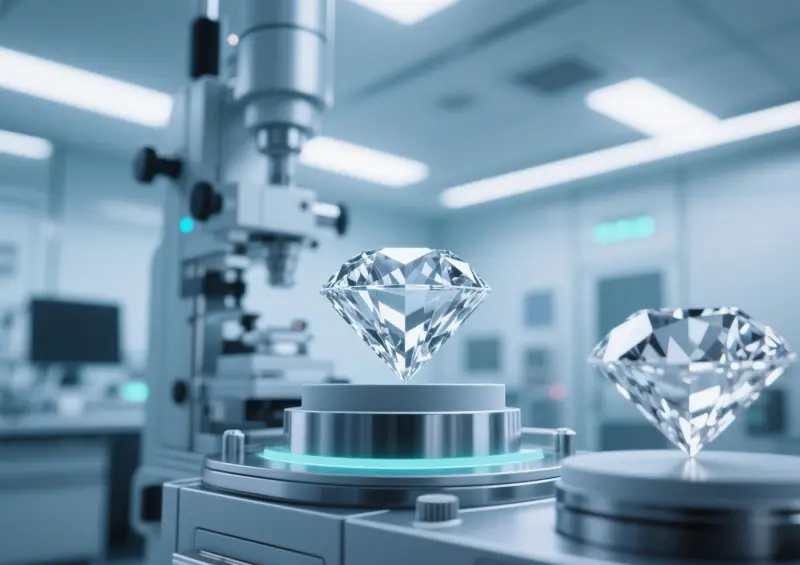
True transparency in the jewelry industry means seeing beyond easy labels like “sustainable” or “ethical jewelry.” It involves brands providing transparent evidence of responsible sourcing, from the mine to the metal, including options like recycled silver and fairmined gold. This builds trust and helps you shop in ways that align with your values, propelling the industry toward a more fair future.
Certifications
Third-party certifications provide a veneer of verification, but it’s helpful to understand what each actually signifies. They validate that a business has achieved certain standards of social and environmental performance.
Before you buy, verify that a brand’s claims are supported by a credible organization. When you support businesses that put money toward these audits, you promote broader industry responsibility.
|
Certification |
Focus Area |
What It Verifies |
|---|---|---|
|
Fairmined |
Gold & Silver |
Small-scale mining, fair wages, safe working conditions, environmental protection. |
|
Fairtrade |
Gold |
Similar to Fairmined, focuses on empowering artisanal and small-scale miners. |
|
Full Supply Chain |
Business ethics, human rights, and environmental performance from mine to retail. |
|
|
Kimberley Process |
Diamonds |
Aims to prevent the trade of conflict diamonds from entering the mainstream market. |
Traceability
Knowing the complete path of your jewelry, down to each individual stone, is the secret to verifying its ethical provenance. That’s knowing where the metals and gems originated and the terms under which they were obtained. Comprehensive traceability is challenging, but certain brands are prioritizing it. Blockchain is an up-and-coming method that provides an immutable record of a material’s journey, providing the highest level of confidence.
You can take steps to trace the origins yourself:
- Direct the jeweler to provide mine or country-of-origin information on metals and gems.
- Ask about the company’s supplier code of conduct.
- Search for brands that publicly map their supply chain on their site.
- Opt for pieces crafted with recycled metals or lab-grown gems, whose lineage is more traceable.
Brand Story
A brand’s story and mission statement says what they really care about. Seek out brands that transparently address sustainability, such as goals and progress. This transparency demonstrates they are responsible for their effect.
Opt for brands that are transparent about their sourcing, production and labor. When a company’s values on environmental stewardship and social equity align with yours, you can shop with increased peace of mind.
The Ripple Effect of Your Choice

Your choice in jewelry is a strong statement much bigger than a style statement. Every purchase can either reinforce the current system or contribute to creating a more conscious industry. The jewelry industry has a significant environmental impact, with raw material mining just one contributor responsible for 4 to 7 percent of global greenhouse emissions.
This causes massive water pollution and habitat loss as well. When you opt for ethical jewelry, you immediately curb the need for newly mined metals and gems, assisting in the decrease of the industry’s carbon footprint.
Your decision creates a strong social effect as well. The precious materials business has historically struggled with human rights problems, from labor abuses to conflict diamonds that finance bloodshed. By patronizing ethical jewelry brands that value ethical sourcing, you incentivize goodness across the supply chain.
That is offering up fair wages, safe working conditions, and transparent sourcing that doesn’t harm conflict zones. Going vintage or second-hand is another way to make a difference, as it completely circumvents the need for new mining and waste.
These pieces typically have a history and character all their own that you wouldn’t experience in a mass-produced jewelry item.
Progressive manufacturers are fueling this transformation by implementing superior practices. For instance, companies like HonHo Jewelry Manufacturer focus on using eco-friendly materials like stainless steel and recycled silver.
Through their focus on ethical manufacturing and timeless, sustainable designs, they prove that exquisite, trendy jewelry can be created with reverence for humanity and the environment. By supporting these businesses, you create a ripple effect in which more companies are driven to use sustainable methods and you add to a healthier, more equitable world with every new piece you wear.
Tips for Finding Ethical Brands

That’s why if you want to find a truly ethical jewelry brand, you’ve got to look beyond the marketing. Begin with transparency. Brands that are genuinely committed to ethical practices will be open about their supply chain. Check out their site for information about where they source their metals and stones, as well as the circumstances in which their jewelry pieces are produced.
If this info is difficult to locate, it can be a warning sign. A transparent, verifiable supply chain from mine to piece demonstrates a brand’s dedication to responsible jewelry practices.
Next, seek out certifications that validate a brand’s claims. Fairmined or Fairtrade Gold certifications indicate that the metal came from small-scale mining groups that have been vetted for strict labor, safety, and environmental standards.
For diamonds and other gems, the Kimberley Process Certification Scheme is a baseline, but it falls short. Therefore, it’s best to look for ethical jewelry brands that exceed this by sharing specific origins or emphasizing alternatives.
The materials alone tell a significant part of the story. Several sustainable jewelry companies now utilize recycled silver and other precious metals. This option significantly reduces the demand for new mining, which can be destructive to both the environment and local communities. For gemstones, look for brands incorporating lab-grown or traceable, ethically sourced stones. Lab-grown gems are identical in physical and chemical properties to mined ones but minus the social and environmental baggage. Brands that use mined stones should be able to provide evidence of ethical sourcing, so don’t hesitate to ask them direct questions about their suppliers and workforces. An accountable business will.
Conclusion
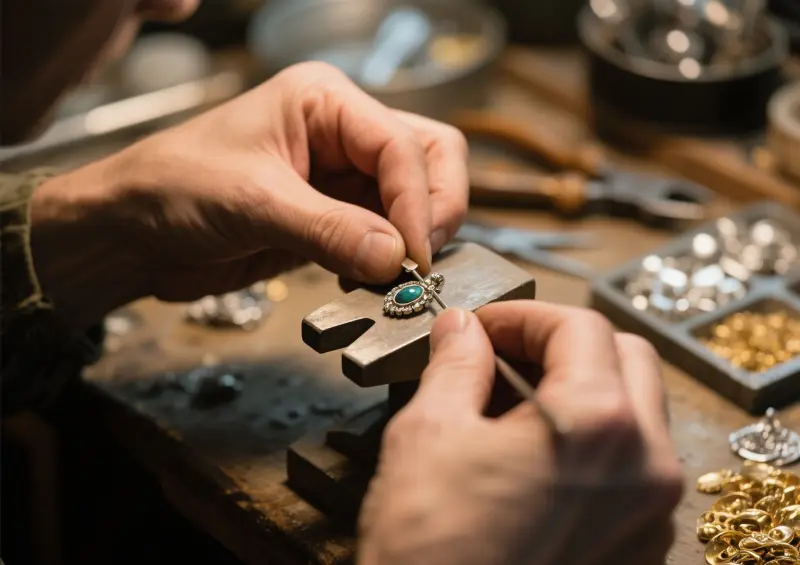
Selecting your next statement piece is a BIG DEAL. You’re not simply purchasing a bauble. You are backing a narrative. It’s a decision that can assist others and conserve the earth. It demonstrates what you value.
Selecting lovingly crafted jewelry implies that your fashion sense carries weight as well. For instance, a recycled gold ring has a history and history. A necklace with a lab-grown gem sparkles and gleams without a heavy footprint. These decisions accumulate. They drive the entire industry to be better.
Time to discover one that really sparkles! Peruse our list of sustainable jewelry brands to kick off your hunt.
Frequently Asked Questions
What exactly is sustainable jewelry?
Sustainable jewelry that honors people and the planet is crafted using ethically-sourced materials, such as recycled silver and sustainable metals. Ethical jewelry brands ensure fair labor practices and minimize their environmental footprint throughout the entire production cycle.
Is sustainable jewelry more expensive?
Not necessarily. Although certain handcrafted pieces can be on the pricier side, there are several ethical jewelry brands that offer reasonably priced options. By opting for timeless, well-made pieces from a sustainable jewelry company, you’re investing in jewelry that lasts, saving you money in the long run against fast-fashion trends.
How do I know if a jewelry brand is truly ethical?
I always seek out transparency in ethical jewelry brands. An authentically ethical brand will be transparent about its supply chain, sustainable materials, and labor practices. Look for certifications like Fairmined or Fairtrade, and review their website for specifics, as hidden information is a red flag for me.
What are the best materials for sustainable jewelry?
I suggest searching for items crafted from recycled metals such as gold and silver, particularly from ethical jewelry brands. For gemstones, consider lab-grown diamonds or traceable, ethical gemstones. These sustainable choices decrease the need for traditional mining, which can negatively impact our natural world and society.
Are lab-grown diamonds a sustainable choice?
Hmm, yeah, I think they’re a fantastic sustainable choice. Lab-grown diamonds are molecularly the same as mined diamonds but produced with none of the environmental and ethical concerns linked to the traditional jewelry industry. They provide you the same glimmer with a significantly reduced footprint.
Why should I choose recycled metals?
By sourcing recycled metals such as gold or silver, you are supporting ethical jewelry practices and eliminating the demand for new mining to a great extent. This protects natural lands, reduces water consumption, and decreases carbon emissions, making it a sustainable choice for those seeking ethical jewelry collections.
Share:
More Posts

10 Questions to Ask When Choosing a Jewelry Manufacturer
Key Takeaways Jewelry manufacturer vetting is the quality, ethics and on-time delivery checking of suppliers. It includes material traceability, fair labor, audit history, capacity and
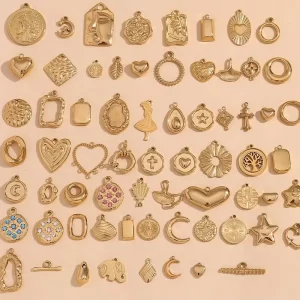
Jewelry Findings Guide: Essentials for DIY & Hypoallergenic Design
Key Takeaways Jewelry findings guide provides concise information on the smaller components used in jewelry manufacture and repair. These pieces are clasps, hooks, jump rings,
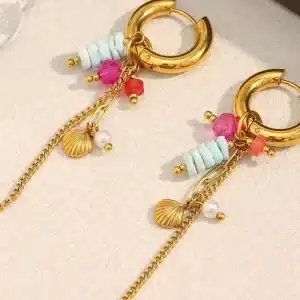
Waterproof Jewelry Materials: A Guide for Your Next Vacation
Key Takeaways Waterproof jewelry materials include stainless steel, titanium, platinum, and silicone. These metals and non-metal alternatives don’t rust or dull when worn in water.
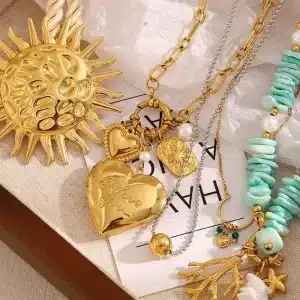
Charm Chain Styling: A Guide to Layering and Materials
Key Takeaways Charm chain styling is basically adding little charms to a plain chain in order to create a new look. This method of adorn
Send Us A Message
Related Posts

Sustainable Jewelry Guide: Ethical Choices
Key Takeaways Sustainable jewelry is crafted from ethically-sourced, recycled, or eco-friendly components and processes. This choice minimizes harmful effects on both people and the planet.
